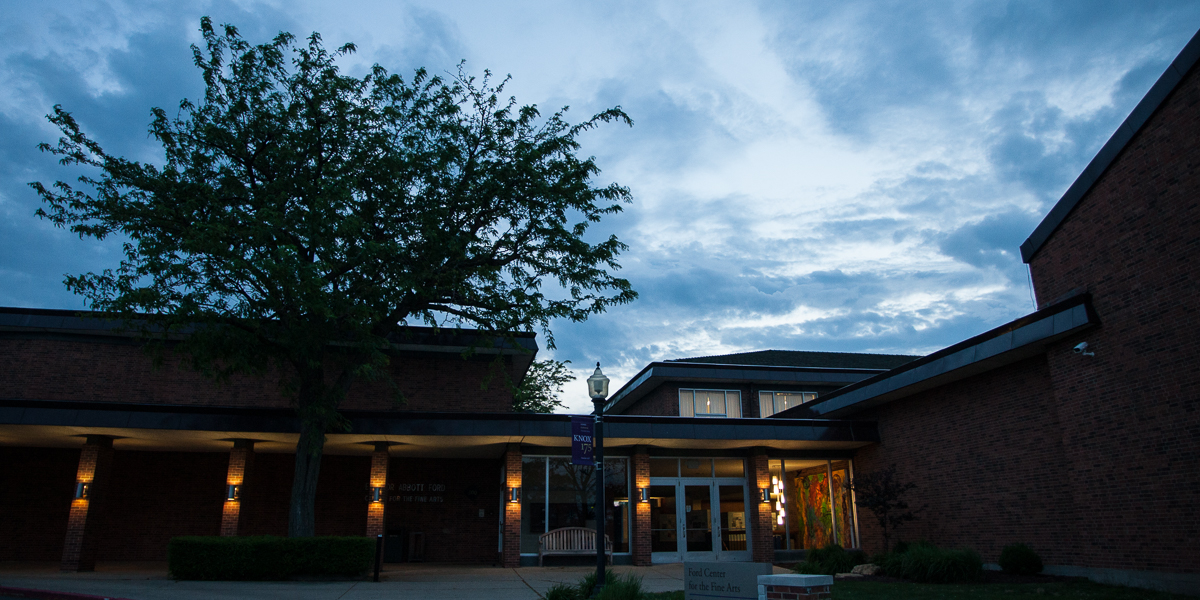When Knox College moved all 2020 spring term classes online, Physics Professor Thomas Moses quickly had to figure out how to give his students access to the experiments that are central to Physics 341 (Advanced Physics Laboratory).
The course typically includes lots of hands-on lab work so students can expand their knowledge of the techniques and instruments used in different branches of physics. The instrument and analysis skills that students learn in Physics 341 help prepare them for graduate-level research and for lab work in many engineering and technical careers.
Instead of his usual approach of working with students in person, Moses worked with them online and sent them what they needed for experiments in optics and electronics: photographs, video, a simulation program, and a kit consisting of electronic parts, hand tools, a voltmeter, and other items.
Some of the lab work required students to operate an interferometer, which splits a beam of light and then recombines it to form a wave interference pattern. “For the prelab experiment of our first lab, Professor Moses sent us images of the lab setup and recorded some essential measurements in the lab,” explained student Philip Griffin '20. “We were sent a video of the laser light's diffraction pattern after it passed through the Michelson Interferometer."
"We derived a formula relating some of our measured quantities, took measurements of this video and some of the other images, and finally got what we were after, the index of refraction of a glass slab," Griffin added. The index of refraction indicates the speed of light in the glass slab.
For a related experiment, Moses wrote a web-based simulation program that produced an image of an interference pattern in students’ browsers. Just as they would have done in a lab environment, students could adjust the interferometer’s mirrors, observe the resulting changes in the interference pattern, and make measurements.
A third experiment required students to design a circuit that could make precision voltage measurements and control a multi-digit seven-segment LED display, similar to the numerals on a digital clock.
“I really appreciate Professor Moses' work in getting the Knox experience into our homes in this exciting way,” said Griffin, who plans to return to campus in the fall through the post-baccalaureate fellowship program so he can assist the Physics Department with the new observatory, which he helped to design.
Moses said that a key goal of Physics 341 is to have students learn to use and troubleshoot complex apparatus. That’s difficult in a distance-learning situation, he said, but the electronics construction project, which made up about half the course, allowed students to accomplish that goal.
“I was actually worried that the project was too hard, that helping them troubleshoot remotely wouldn't work, and that the projects would end disappointingly—but luckily I was wrong about all that,” he said. “The students were challenged, but ultimately they all got their projects working. So it was a confidence-building experience for all of us.”
Overall, he said, teaching the class remotely proved to be a success.
“One of the ethics of experimental physics is that you get your experiment working, even if the apparatus has to be shored up with string and duct tape,” said Moses. “This year, that meant cell-phone videos, javascript code, and voltmeters sent through the U.S. mail—but the experiments worked.”
Photo at top of the page: Professor Thomas Moses assists a student with a research project. (File photo)




 "I really appreciate Professor Moses' work in getting the Knox experience into our homes in this exciting way." —Philip Griffin '20
"I really appreciate Professor Moses' work in getting the Knox experience into our homes in this exciting way." —Philip Griffin '20